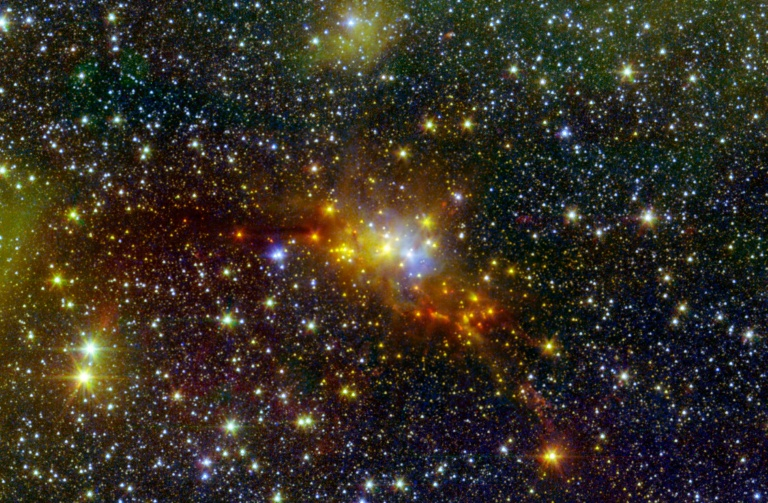New insights into mysterious, cosmic ‘fast radio bursts’

Astronomers have edged closer to solving the mystery of distant cosmic radio bursts, according to a study that offers insights into the blasts which emit more energy in a single millisecond than our sun does all day. Image: NASA /AFP
Astronomers have edged closer to solving the mystery of distant cosmic radio bursts according to a study Wednesday that offers insights into the blasts which emit more energy in a single millisecond than our sun does all day.
International astronomers have spotted a few dozen fast radio bursts (FRBs) — and as many as 10,000 may occur daily — but only one has repeated sporadically, known as FRB 121102, allowing it to be studied.
Researchers reported in the journal Nature that it appears to come from in an extreme environment, “among the most highly magnetized regions of space ever observed.”
Similar environments are known to exist around massive black holes, but that may not be the only answer.
The radio bursts from FRB 121102 could also originate from a young neutron star inside a powerful nebula, or a supernova remnant, said the report.
“This is exotic. If we had one of these on the other side of our own galaxy — the Milky Way — it would disrupt radio here on Earth, and we’d notice, as it would saturate the signal levels on our smartphones,” said Shami Chatterjee, senior research associate in astronomy at Cornell University.
“Whatever is happening there is scary. We would not want to be there.”
These radio bursts were first discovered in 2007, so small even steps toward understanding their source offers big excitement for astronomers.
The source of FRB 121102 and its environment are unique, indicating “a new type of object not seen previously,” said the report.
The huge pulse of radio waves — more than 500 times greater any other fast radio burst observed to date — come from three billion light years away and pass through a veil of magnetized plasma.
FRB 121102 was discovered in 2014 by Laura Spitler, a postdoctoral researcher who now works for the Max Planck Institute for Radio Astronomy in Bonn, Germany.
The mysterious burst lasted three one-thousandths of a second.
The latest data came from telescopes at the Arecibo Observatory in Puerto Rico and Green Bank Observatory in West Virginia.
“It’s remote sensing from three billion light years away,” said James Cordes, professor of astronomy at Cornell University.
“These new measurements allow us to be much more specific about the immediate surroundings of the source.” AB
RELATED STORIES:
SpaceX launches secretive Zuma mission
Cosmic dust, not ‘alien megastructure,’ veils mysterious star